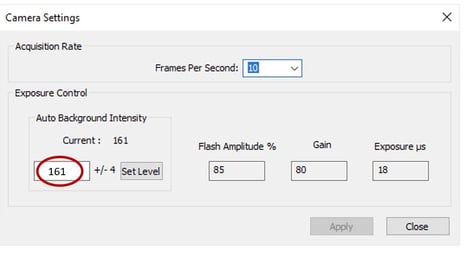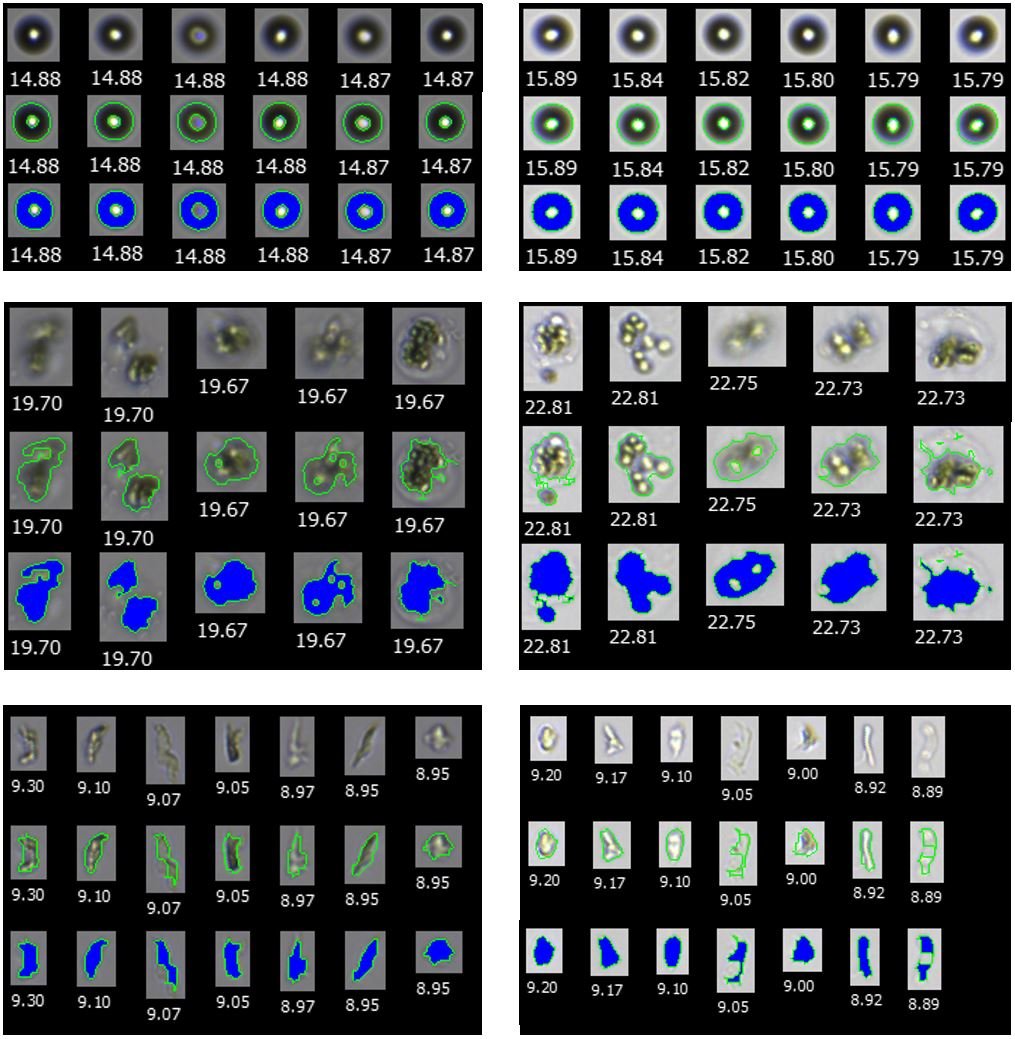In flow imaging microscopy with FlowCam, background intensity is an important factor to consider for image segmentation and overall particle characterization.
Efficient image segmentation is achieved with digital imaging processing via FlowCam software, VisualSpreadsheet®. VisualSpreadsheet captures digital images of the flow cell and uses pixel values in the raw image data to partition these images into individual particle images. Background Intensity Mean (BIM) is an important parameter in effectively discerning foreground particles from the background. A value between 0 and 255 indicates how bright or dark the background of the flow cell is with values closer to zero representing darker shades and values near 255 representing lighter shades for the background. When background intensity levels are optimized, more highly resolved image segmentation is achieved, which yields more accurate sample calculations for more precise sorting, filtering, and classifying of individual particle images.
 FlowCam instrument default camera settings are optimized for particle image extraction to minimize the need to adjust background intensity levels when imaging various types of particles. To demonstrate the robust imaging capabilities of FlowCam, we profiled the characteristics of various particle sample types over a series of background intensity values. The findings reported in our most recent technical note show comparable quantitative metrics across the range of background intensities tested.
FlowCam instrument default camera settings are optimized for particle image extraction to minimize the need to adjust background intensity levels when imaging various types of particles. To demonstrate the robust imaging capabilities of FlowCam, we profiled the characteristics of various particle sample types over a series of background intensity values. The findings reported in our most recent technical note show comparable quantitative metrics across the range of background intensities tested.
The expected effect of edge gradient values increasing with increasing background intensity for opaque bead samples was observed. And while particle count values for more translucent protein-like particles varied with background intensity, the greatest particle count values were achieved at background intensity levels within the recommended range of 160-170.












